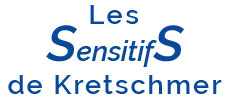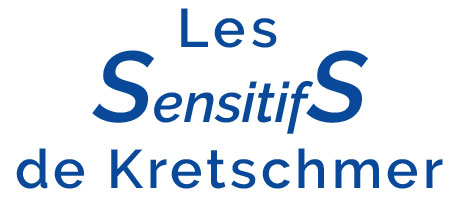Medications
Kretschmer conducted a very detailed study of sensitive paranoia over a period of more than 30 years. His book “Der sensitive Beziehunswahn” published in 1950, and translated as “Paranoia and sensitivity” [1], described a large number of cases in very great detail. However, antidepressants and neuroleptics did not exist at the time of publication of this book. Their introduction in 1952 for the treatment of delusional disorder led to a revision of the basic concepts. Research psychiatrists have subsequently tried to determine which medications are able to most effectively stabilize sensitive paranoia.
A consensus appears to have been gradually reached in favour of a combination of an antidepressant at conventional doses with a low or medium dose of neuroleptic, as illustrated by the following quotations.
A. PROSPERI and G. PUPESCHI wrote [2]: “Chemotherapy is generally mixed, using a combination of antidepressant and neuroleptics (Guyautat et al., 1966; Sutter et al., 1968). Antidepressants, preferably tricyclics or serotonin reuptake inhibitors, are prescribed according to the conventional dosages and durations. They must be initiated at the onset of the disorders.
Incisive neuroleptics, which are not systematically proposed by all authors, must be used at low to medium doses. At excessively high doses, by inhibiting the delusional symptoms, may worsen the depression. Atypical neuroleptics or antipsychotics could have an indication of choice in this setting, but always at low doses.”
Similarly, J.P. OLIE, T. GALLARDA, and E. DUAUX indicated [3]: “Some sensitive paranoia subjects require long-term chemotherapy (Anafranil, 50 mg/day and Largactil, 100 mg/day)”. Note that the dose of the antidepressant Anafranil is classical, while a low dose of the neuroleptic Largactil is recommended.
A. FOURNIER [4] wrote: “After 2 weeks of treatment of a patient with Kretschmer’s sensitive paranoia, essentially comprising neuroleptics (Haloperidol and Nozinan), the clinical features remained unchanged and the delusions persisted. We added treatment with Floxyfral at a dose of 150 mg per day (three 50 mg tablets) and, after a period of 10 to 15 days, a marked improvement was observed with lucid and critical insight into the delusions. This state allowed the patient to be discharged from hospital about one month after admission”
These authors emphasized the need for moderate doses of neuroleptics to avoid accentuating the depression.
This was confirmed by M. ESCANDE, L. GAYRAL, and E. GOLDBERGER [4]: “A frequent reaction is the depressive reaction which accompanies the delusional state and which deteriorates during the course of treatment, when the delusional activity has been treated with a long-acting neuroleptic.” These same authors, in another paper [5], indicated that this depressive reaction is frequently accompanied by hypochondria.
M. ESCANDE and B. BONNET precisely explained the causes for this “depressive reaction” [6]: “Depression in these cases is clearly related to clinical pharmacological effects, but are inseparable from the psycho-structural modifications, including bereavement of delusions, perceived as a loss for the ideal self.”
This depression is often very difficult to characterize as such. Many authors use the term “masked depression”, as it is hidden by the delusions. However, it is really present and responds favourably to antidepressants.
Treatment must be prescribed very carefully
Treatment must be prescribed very carefully and exclusively by a psychiatrist.
Note that antidepressants do not have any convincing effects on sensitive paranoia during the first 10 days to 2 weeks of treatment, as previously indicated by FOURNIER. Antidepressants can therefore only be considered to be ineffective after at least 3 weeks of treatment.
Not all patients with sensitive paranoia respond to medication in exactly the same way. Some patients respond very well with long-term antidepressant therapy at conventional doses. However, family and friends must make sure that the patient does not experience a period of overexcitement, which can occur several months or several years after starting treatment. When a state of overexcitement is observed, a very low dose of neuroleptic must be added to avoid episodes of overexcitement. In this case, it may be preferable to use a low-dose disinhibitory neuroleptic such as SOLIAN (about 200 mg/day), which has a favourable effect on negative symptoms: social withdrawal, apathy, loss of energy, ambivalence, lack of pleasure, etc.
Difficulty of the differential diagnosis with schizophrenia
As we have seen, acute dissociative delusions of sensitive paranoia are very similar to those observed in schizophrenia.
On this subject, Kretschmer wrote [2]: “Serious prognostic difficulties are observed in cases in which “schizophrenic reaction” mechanisms are observed at the culminating point of sensitive disorder, before subsequently resolving without a trace.”
Experience has shown that even, in these cases, the combination of a baseline antidepressant with a low-dose neuroleptic gives very good results. Naturally, the first reflex is generally to prescribe a neuroleptic as baseline medication to treat schizophrenia, which is much more common than the acute delusions of sensitive paranoia. However, if the dosage is ineffective, it must be rapidly corrected, as indicated by FOURNIER, as neuroleptics induce depression that can be harmful to sensitive paranoia patients.
1.Paranoïa et sensibilité, traduit par S. Horrinson, 1963 ,PUF.
2.Approches psychopathologique, clinique et thérapeutique du délire de relation des sensitifs : à propos d’un cas. Revue française de psychiatrie et de psychologie médicale. 2002, volume 6, n°52, pages 55-60
3.Le livre de l’interne, Psychiatrie , 2ème édition, Médecines Sciences Publications, Lavoisier, page 246
4.Dépressions et antidépresseurs au cours des traitements par les neuroleptiques à effets prolongés. Annales médico-psychologiques, 1974,132,2,5 pages 669–694
5.L’hypocondrie émergente “méta-thérapeutique” ; In : Comptes-rendus du Congrès de Psychiatie et de Neurologie de Langue Française, Nimes, 1974,Paris, Masson,1974,300-308
6.Le délire de relation sensitif de Kretschmer. Aspects historiques et modernes. La semaine des hôpitaux, 1985, 61, 14, pages 893-899
7.Kretschmer, ibid, page 4

